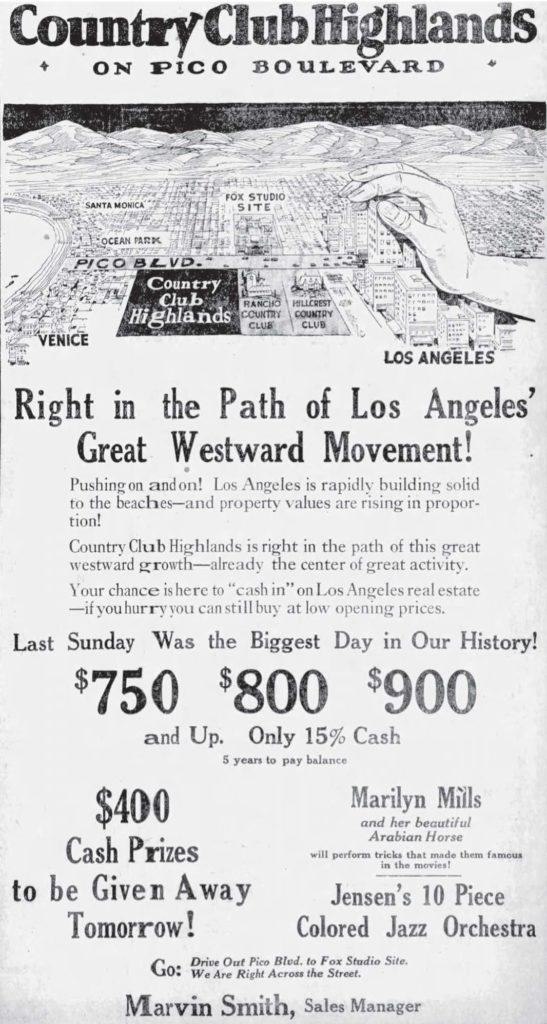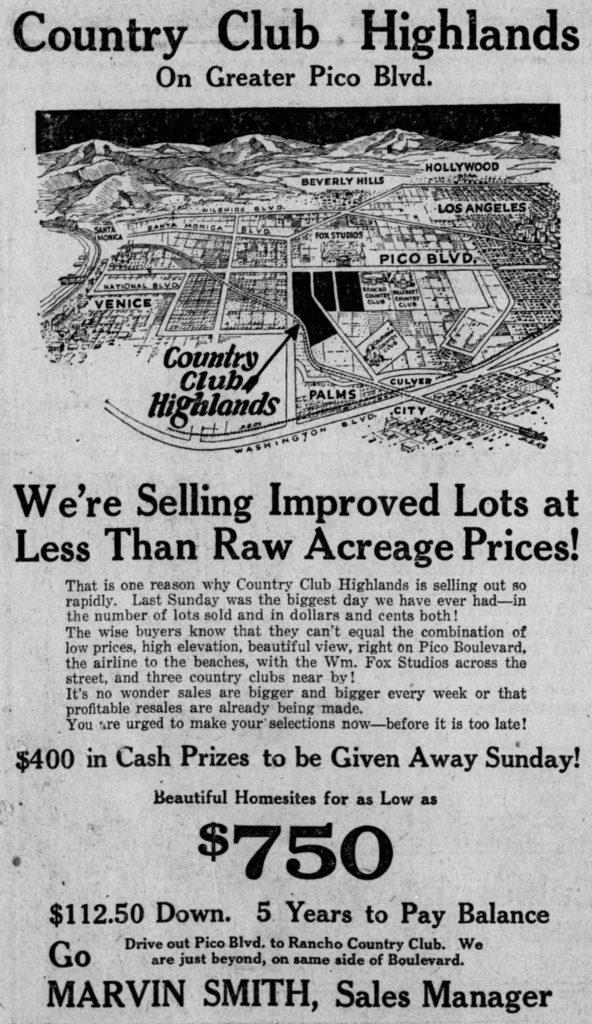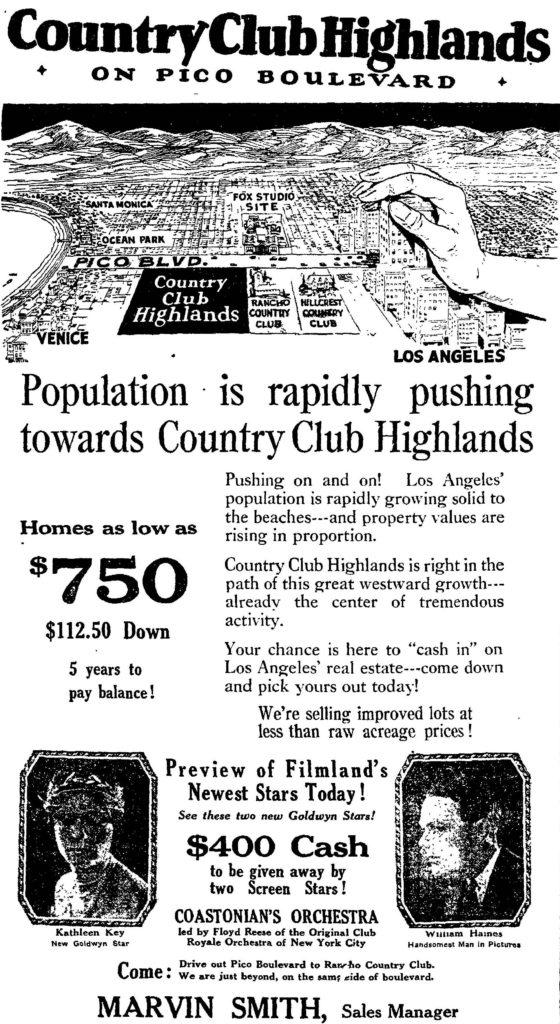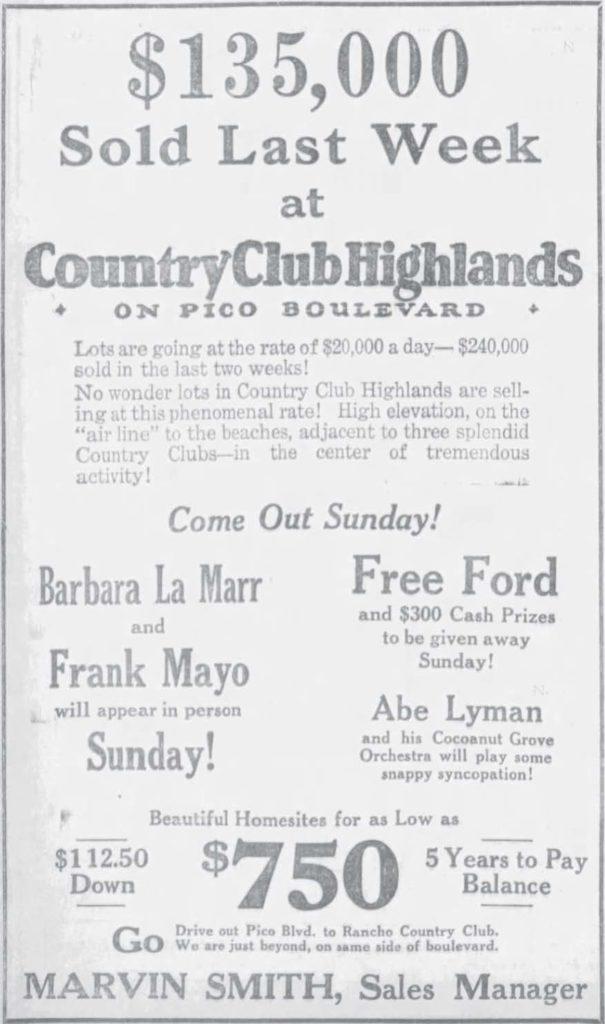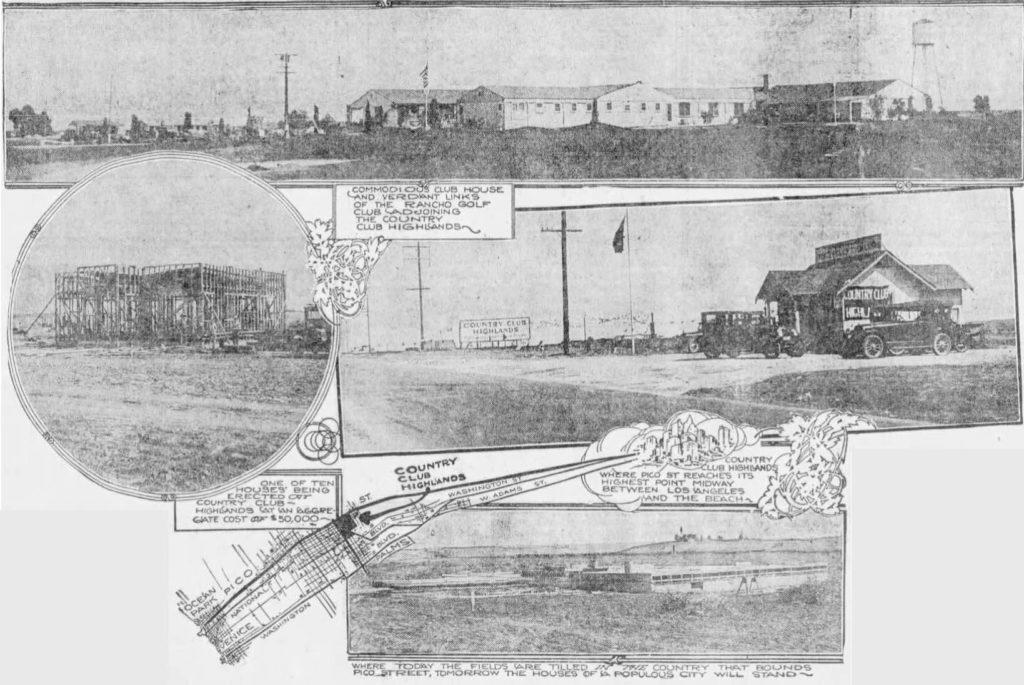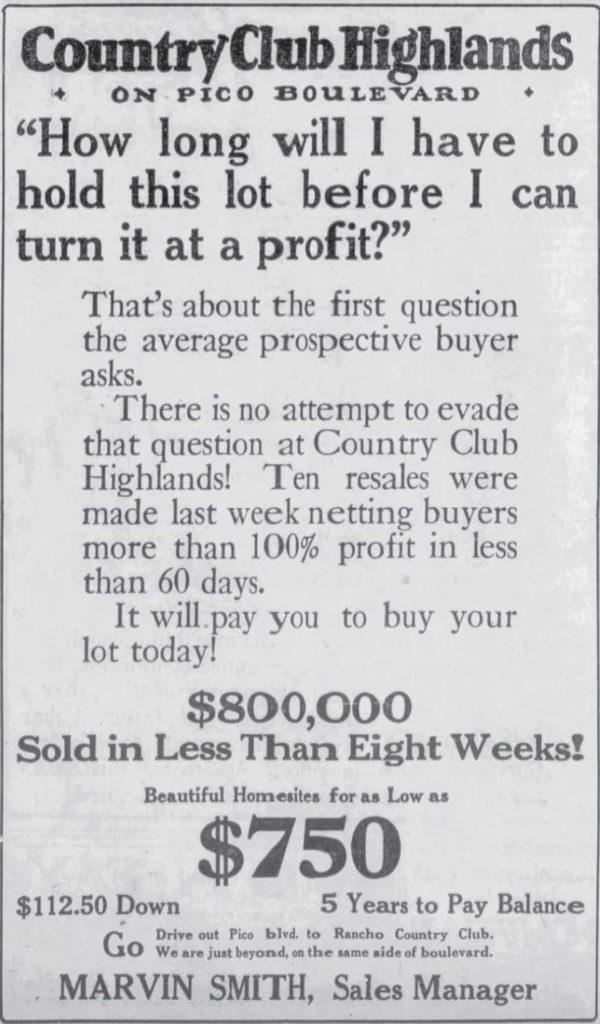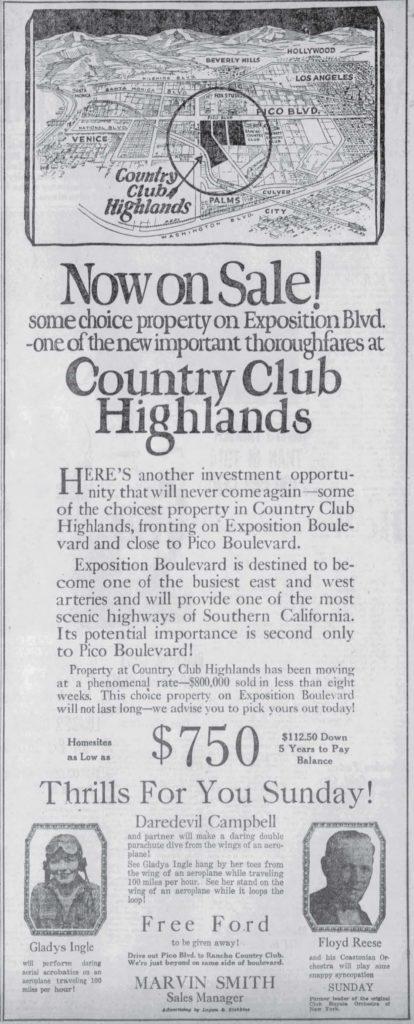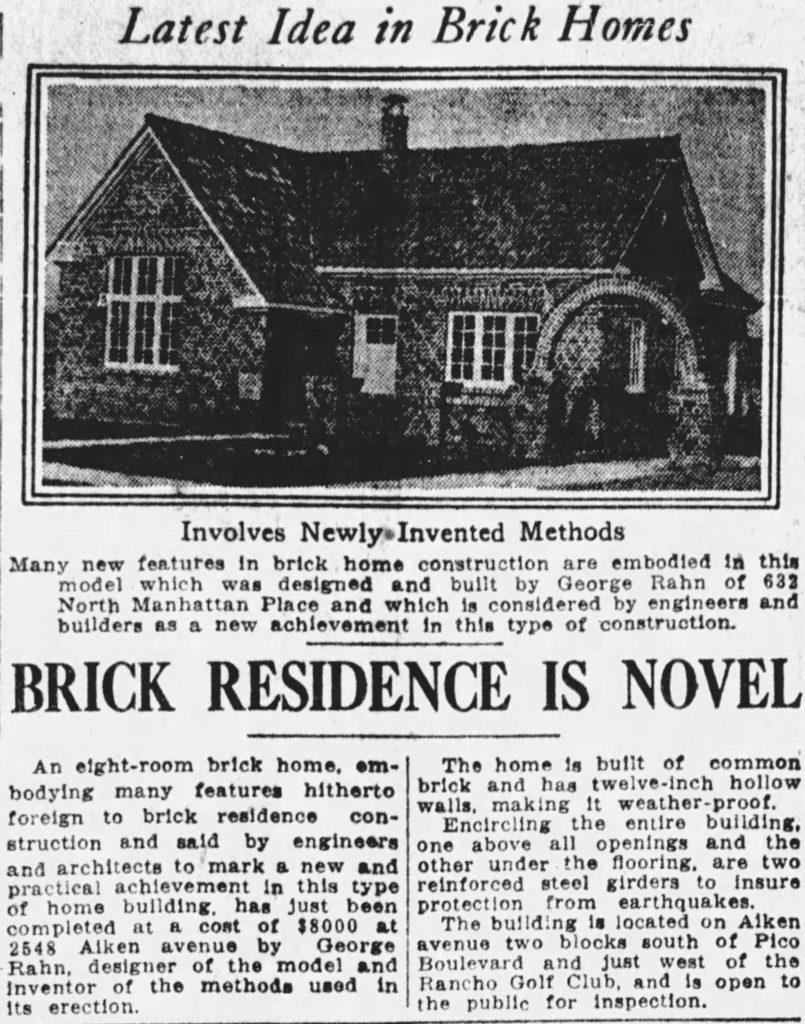Country Club Highlands
The Los Angeles City Council approved the Country Club Highlands subdivision on November 20, 1923. Council minutes show that, to gain approval, Manning Avenue (then Hughes Avenue) was vacated/rerouted and a bond provided for “disposing of” storm water. A week later, on November 26, 1923, the subdivision map for Tract 7156 was filed with Los Angeles County. Several months earlier, the area had been incorporated into the City of Los Angeles through the May 16, 1923, “Ambassador Annexation” (a.k.a. Ambassador Addition), and Hellman Commercial and Savings Bank signed off on the maps in October 1923.
Developer – Ben Sheldon
The tract was developed by Benjamin “Ben” Cushing Sheldon (1876-1959) and A. G. Smith along with their sales manager, Marvin Smith. Two months before the City of Los Angeles approved the subdivision, the developers “announce[d] the opening of their Country Club Highlands subdivison of 714 lots on Pico Boulevard, midway between Los Angeles and Santa Monica.” They began advertising in September 1923, trumpeting “homesites as low as $750, $112.50 down, 5 years to pay balance!” The area was infrequently referred to as Country Club Highlands after the mid-1930s; it was thereafter known as Rancho Park and/or Cheviot Hills. Southeasterly sections are within the Cheviot Hills Home Owners’ Association’s domain. Ben Sheldon and A. G. Smith had developed Glendale’s Wing Tract together. Next, in 1924, Sheldon and his wife Mary Edith (Butterfield) Sheldon (1884-1945) along with Hervey Meeker Porter (1870-1938) and his wife Helen (Percival) Porter (1876-1962), developed another “Highlands” tract: Santa Monica Highlands (Tract 7952) near the western end of Pico Boulevard. Also in 1924, A. G. and Marvin Smith formed Gibraltar Finance Corporation to buy and sell mortgages (and engage in other financial business).
Ben Sheldon was born December 3, 1876, in Pike County, Missouri, and raised in Minneapolis, Minnesota. In 1899, The Lutheran Witness published a short account on Sheldon reporting to the New York Tribune on “the religious character of the inhabitants of the Philippine Islands.” By 1906, he was secretary and treasurer of the Verde Water and Power company (his father, Augustus Charles “A. C.” Sheldon was president) when he ran for Minneapolis alderman. Verde Water and Power had taken over from a group which had promoted and begun construction of a project to irrigate 400,000 acres in Paradise Valley, just north of Phoenix, Arizona. Fairly or otherwise, Ben Sheldon was tarred with being too close to such business interests; he did not win the seat.
By 1911, Sheldon had moved to Medford, Oregon, where involved himself in civics and business; he would be a fruit orchardist, newspaperman, and legislator. In December 1914 he wrote “Southern Oregon, the Tourists Paradise” for the Ashland Tidings paper. He was vice president of the Medford Commercial Club (1914), treasurer of the Committee of the People of Southern Oregon (campaigning for the Normal School) (1914), secretary Grants Pass Commercial Club (1917), president Grants Pass Chapter American Red Cross (1917). In about 1917, Ben Sheldon entered public office, largely on a platform of reopening Southern Oregon’s Ashland Normal School; he served in the 1919 and 1921 legislative sessions. As editor of the Rogue River Courier from May through December 1917, Sheldon was succeeded by William Gladstone Steel, a renowned journalist known as “father or Crater Lake” for successfully advocating its establishment as a national park. In 1918, he was back East to marry Edith Butterfield of Chicago, Illinois, in Minneapolis. Returning west, he served as president of the Medford Chamber of Commerce (1921), and (once down in Los Angeles) fifth vice-president of the Greater Pico Street Association, Inc. (1923). In 1949, Sheldon helped establish the Marshall P. Riddick Youth Center by providing a lot at “$100 down and $10 a month.”
Ben Sheldon’s June 30, 1959, obituary reported that Mr. Sheldon, of 10530 Draper Ave., was responsible for extensive subdivision in the 20s and 30s in the Santa Monica, Glendale and Rancho Park areas.” Sheldon’s 10530 Draper Avenue homesite was possibly the largest and one of the highest up in the tract; it has since been replaced by three houses.
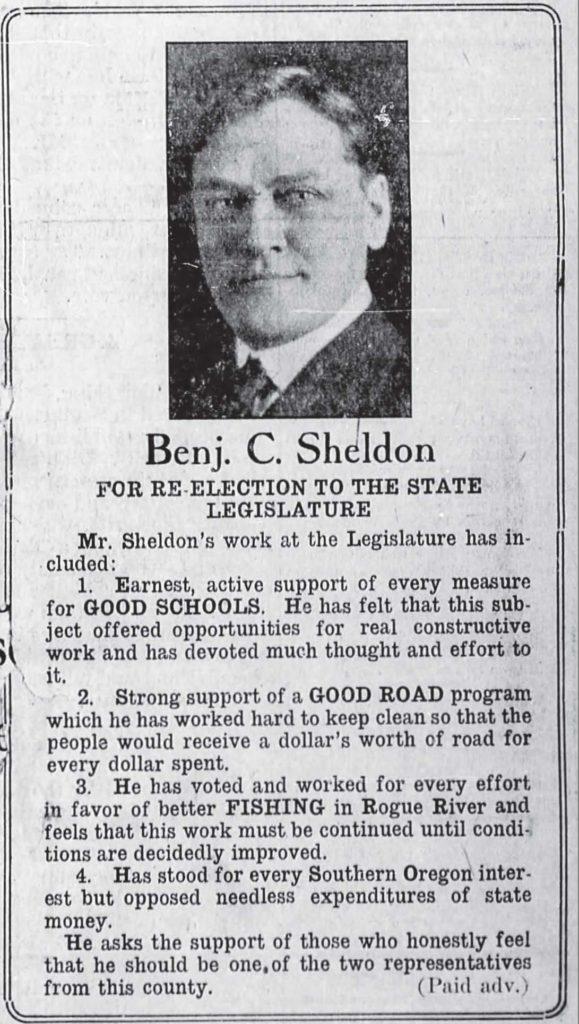
Street Names
The developers apparently named several streets after Sheldon’s family and associates. (Adjacent streets, such as Patricia Avenue – itself named for Westwood developer Edwin Janss’ daughter, Patricia Cluff Janss – were extended into the tract.)
Abbottson Road – Abbott Westgate Sheldon (1924-1936) was Ben & Edith Sheldon’s son (Abbott-son). “Abbott” was already a street name in Los Angeles. Abbottson Road became Cheviot Drive on December 11, 1942, extending the Cheviot name south from the Cheviot Hills tract.
Ayres Avenue – Frank H. Ayres (1876-1950) was second vice-president of the Greater Pico Street Association, Inc., when Ben Sheldon was fifth vice-president. Ayres’ name is seen on a chain of California hotels – owned by his descendants. In 1926, fellow member, first vice-president George Domville Robertson (1880-1956) would see his name replace Pruess, Arnaz, Seward, and Sherman when “Robertson Boulevard” was applied to those connected streets east of Country Club Highlands.
Bradbury Road – Ralph Bradbury Butterfield (1876-1944) was Edith Sheldon’s brother.
Butterfield Road – Edith Butterfield Sheldon (1884-1945) was Ben Sheldon’s wife. The L. A. Street Names website tells more about her.
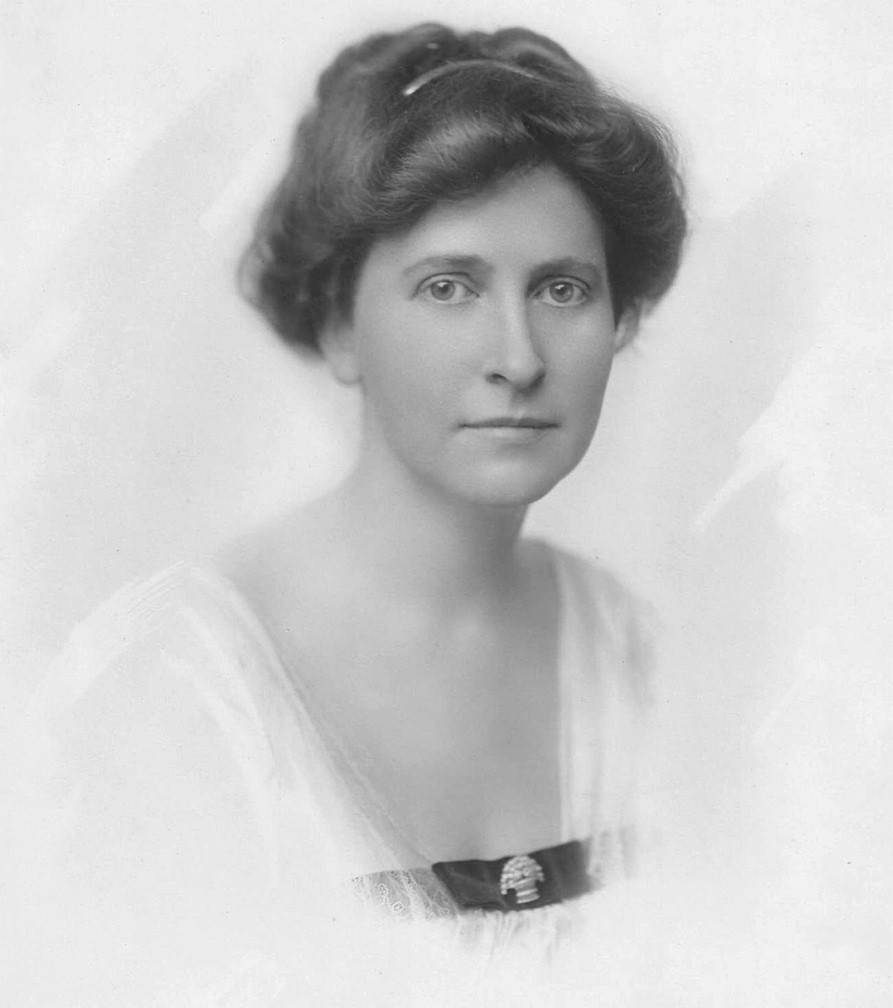
Cushdon Avenue – portmanteau of Cushing and Sheldon, for Benjamin Cushing Sheldon.
Country Club Highland streets and sidewalks are stamped: “general contractor Hall Johnson Co.”
For Sale!
Country Club Highlands promotors drew people to their development by promising free entertainment from a wingwalker (Gladys Ingle – whose plane would take off from Country Club Highlands), to bands (Abe Lyman), to actors (William Haines, Barbara La Marr, Edna Wallace Hopper) to cash giveaways, to a free Ford car.
